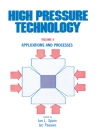A changing climate is causing challenges for soil and water management in many parts of the world. Current soil management practices need to be redesigned to effectively address present and future fluctuating climates.
Soil Hydrology in a Changing Climate explores how soil management practices impact soil hydrological characteristics, and how we can improve our understanding of soil and water management under changing conditions. Soil hydrology includes water infiltration and soil water storage, which are critical for agricultural plant and animal production. With our future climate predicted to include hotter, drier conditions, increases in evapotranspiration as well as fewer, more intense storms, improved soil management and soil hydrology are critical to ensuring our agriculture production can meet human demand.
This comprehensive book is a valuable resource for land managers, soil conservationists, researchers and others who wish to understand how different management practices affect soil and water dynamics and how these practices can be adjusted to enhance agricultural sustainability and environmental quality.
Spis treści
Preface
List of contributors
1: Land use changes and fluctuating climate
2: Climate fluctuations and soil hydrology
3: Soil health and soil water
4: Conservation tillage and soil water
5: Crop diversification and soil water
6: Crop residue management and soil water
7: Conservation buffers and soil water
8: Forest land use and soil hydrology
9: Urban soils and soil water
10: Maintaining wetland ecosystem services in a changing climate
Colour plates
11: Soil water management and climate fluctuations: modelling approach
Index
O autorze
Stephen H. Anderson is the William A. Albrecht Distinguished Professor of Soil and Environmental Sciences in the School of Natural Resources at the University of Missouri, USA. His current areas of research include evaluating soil management effects on soil hydraulic properties, developing X-ray computed tomography and microtomography techniques to assess pore-scale soil properties and processes, and utilising hydrologic models to evaluate effectiveness of conservation practices at the watershed scale.












